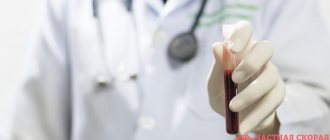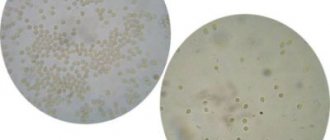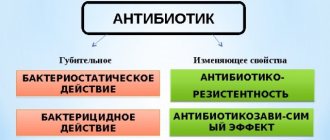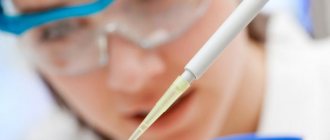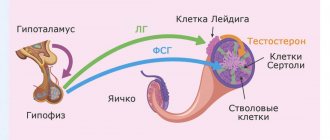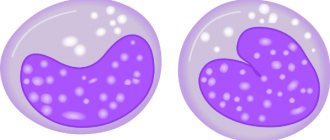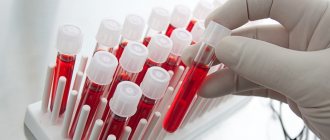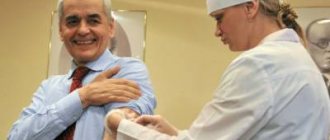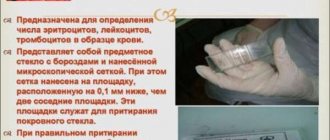ppm what is it
The translation of the word “ppmille” from Latin means “per thousand,” that is, 0.001 part of something. The unit of measurement is used to determine the amount of alcohol in the blood, due to its extremely small content compared to the total volume of the bloodstream. An amount of 0.1 ppm is approximately equal to 0.045 mg of ethanol per liter of liquid.
How to measure alcohol content in the body
Alcohol content in the body is measured in various ways. In practice, two methods :
- Measuring the content of ethanol vapor in the air exhaled by a person using a special device - a breathalyzer.
- Laboratory analysis of a blood sample from a vein.
The second method is much more accurate and objective, which is why it is included in the protocol. In other words, the readings from a mobile device are not direct evidence of exceeding permissible level of alcohol intoxication. A breathalyzer test allows for an inaccuracy of about 0.05%. This discrepancy is significant enough that laboratory confirmation is required.
Permissible limits
The acceptable level of ethanol content in the bloodstream is no more than 0.356 ppm. The air exhaled by the lungs under such circumstances contains 0.16 ppm of alcohol vapor. Despite regulated by law, article of the Administrative Code of the Russian Federation No. 12.8 cannot be discounted. It clearly states that citizens are prohibited from driving while intoxicated, regardless of its level.
Is the law fair?
Measures aimed at combating drunk drivers are also being tightened in Europe. Moreover, in most Western European countries, not only administrative, but also criminal liability is provided for violations of sobriety requirements Country regulations:
- Republic of Belarus, Czech Republic, Baltic States, Slovakia, Ukraine - 0.0% ppm;
- Norway, Poland, Sweden - 0.2% ppm;
- Finland, France, Greece, Spain, Germany, Italy - 0.5% ppm;
- Great Britain and Luxembourg - 0.8% ppm.
As you can see, the limit values vary greatly. This is due to national characteristics , the culture of drinking alcoholic beverages and the consciousness of citizens.
If it happens that you drank an alcoholic drink, and suddenly the need to get behind the wheel arose, then you need to take into account the rate of alcohol elimination so as not to get yourself into trouble . A healthy person weighing 80 kg requires 100 g of alcohol to be eliminated naturally:
- beer (4–6°) – 40 minutes;
- sparkling wine (11°) - 75 minutes;
- vodka (40°) - 4 hours 20 minutes;
- cognac (42°) - 4 hours 40 minutes.
Of course, the figures are average. They depend on the rate of absorption and metabolism, which is different for everyone. On average, in a healthy man weighing 75 kg, after drinking a bottle of beer, the test will show that the permissible limit is doubled. Ethanol removal will take up to 3 hours.
If in the evening, before the morning trip, you cannot refuse alcohol, then you need to limit yourself to a glass of dry wine, a glass of beer (not fortified), a glass of vodka or cognac. In this case, in the morning the alcohol content will be normalized , and the chances of violating the requirements of the law will disappear.
Application of special tubes
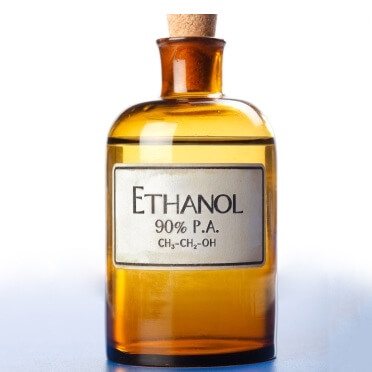
The concentration of alcohol in the body can be determined using special tubes. One such device is designed for one use. Externally, it is a tube sealed on both sides, and inside it there is a layer of a special substance that reacts to alcohol, aldehyde, hydrogen sulfide and acetone.
The tube must be opened before performing the test. This is done using the device that is included in the kit. A mouthpiece is placed on one end of the tube, and a respiratory cylinder on the other. The mouthpiece is placed in the mouth, after which you need to exhale deeply so that the balloon is completely filled. If there is alcohol intoxication, the yellow indicator will turn green. Shades of green allow you to understand the degree of intoxication. The cost of the tube is not too high, and the application is quite simple.
What and how you should absolutely not drink
It is very easy to exceed the permissible alcohol content if you drink alcohol before your trip. If a man weighing 71–74 kg drinks 0.5 liters of vodka or cognac, the level of intoxication reaches 1 ppm. That's a lot. The presence of ethanol in the driver's body leads to slower reactions, decreased concentration , drowsiness or excessive agitation. On the eve of the trip, narcologists categorically do not recommend drinking strong or fortified alcoholic drinks.
Foods that increase ethanol levels in the blood
In addition to alcoholic beverages, before driving a vehicle, it is undesirable to consume certain foods that cause fermentation in the stomach with the formation of ethyl alcohol. Since 2013, the possibility of increased blood alcohol levels due to common food products has been taken into account. Until that moment, it was possible to get into an unpleasant situation completely unexpectedly (because of a glass of kefir). Foods that increase ethanol levels in the bloodstream:
- fermented milk products produced by fermentation (contain up to 0.3 ppm);
- warm natural juices;
- non-alcoholic beer (contains up to 0.4 ppm alcohol);
- yeast kvass (alcohol content reaches 0.6%, so detection of alcohol in the blood is guaranteed);
- fruits and berries that are not fresh (may contain up to 0.5% alcohol);
- menthol lollipops, chocolates (up to 0.4 ppm);
- medicines based on ethyl alcohol.
How to stimulate a rapid reduction in blood alcohol levels
Sometimes you need to go somewhere 2-3 hours after drinking alcohol. You can’t just do this, but there are various ways to speed up the breakdown and elimination of ethanol:
- cold and hot shower;
- exercise stress;
- caffeine.
The listed methods are based on accelerating metabolism. In addition, ethanol is an alternative source of energy, so you need to perform energy-consuming activities to force the body to actively break it down and use . However, reducing the blood alcohol content to normal does not equate to a complete restoration of the functionality of the central nervous system. Slow reactions and decreased concentration will continue to make driving difficult, so extreme caution should be used.
Consequences of alcohol abuse
Regular consumption of even low doses of alcohol leads to irreversible changes in the body. This is the conclusion reached by scientists from the British Heart Foundation.
According to studies, it has been found that frequent consumption leads to a reduction in life expectancy. The risk of cardiovascular diseases (stroke, aneurysm, thrombosis) increases significantly, not to mention diseases of the liver, gastrointestinal tract, and kidneys.
If the concentration of ethanol in the blood exceeds 5 ppm, then the person dies. Even doctors are unable to save the victim.
What dose is considered conditionally safe? Experts have found that you should not drink more than 100 g of ethyl alcohol per week. If we convert this dose into the amount of alcohol, then this is 2.5 liters of beer or a bottle of wine with a strength of 13 ppm. Exceeding the limit is fraught with a shortening of life. If you exceed the norm by 3 times or more, you can die 4-5 years earlier, and this is only if the person does not suffer from any diseases and has a strong heart.
Penalties for driving while intoxicated
If a laboratory analysis proves that the permissible level of ethanol in the driver’s blood is exceeded, a rather severe punishment awaits. The size and type of penalty depend on the circumstances , for example, if we are talking about a recidivism, then the liability will be maximum.
Fine
A fine threatens not only the drunk driver personally, but also the owner of the vehicle if he transfers control to a person in a state of intoxication. The amount of the penalty is about 30,000 rubles, as well as deprivation of the right to drive a car. for driving while intoxicated are :
- in case of violation for the first time - 30,000 rubles;
- relapse - from 200 to 300 thousand rubles.
The amounts are significant, but it could have been worse. For example, in Japan, every passenger in a car with a drunk driver behind the wheel must pay a fine equivalent to $3,000.
Deprivation of rights to drive a vehicle
Driving a vehicle while intoxicated, in addition to a fine, is punishable by deprivation of driving license for a period of 1.5 to 2 years for the following reasons:
- driving while intoxicated;
- refusal of medical examination;
- drinking alcohol after an accident.
In case of repeated violation, the driver is deprived of his right to drive a vehicle for a period of 3 years.
Arrest
An administrative arrest of a drunk driver for a period of 10 to 15 days is possible under aggravating circumstances, for example, driving a vehicle without a driver’s license. The arrest does not cancel the fine in the amount of 30,000 rubles, and the deprivation of driving privileges.
Other types of sanctions
Article No. 264.1 of the Criminal Code of the Russian Federation may be applied to the driver, which provides for the following penalties for a driver who drives a vehicle while drunk and refuses to be examined at a drug treatment clinic, as well as for persons who have previously committed crimes while intoxicated:
- a fine equal to 1-2 years' salary;
- ban on holding positions for up to 3 years;
- 480 hours of correctional labor;
- 2 years of forced labor;
- 2 years imprisonment.
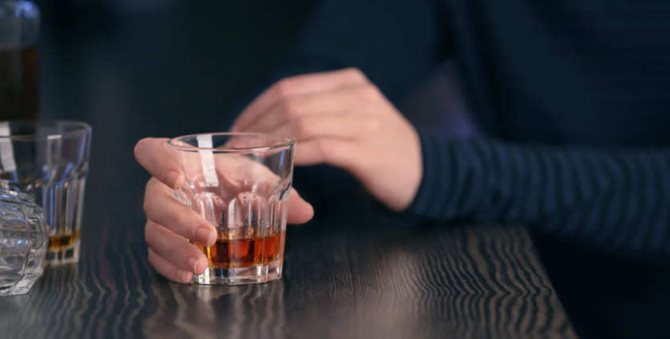
Features of medical examination
The characteristic smell of alcohol fumes, poor coordination of movements, and difficult slurred speech are a legitimate reason for a traffic police officer to require a breathalyzer test to determine the level of ethanol vapor in the breath. However, in order for the procedure to become legal, a number of conditions must be met:
- 2 independent witnesses;
- sealed breathalyzer;
- packaged disposable mouthpiece;
- breathalyzer test by inhalation of air (ethanol content should be zero).
If the device shows that the permissible limit is exceeded, but the driver of the vehicle does not agree with the breathalyzer readings, then it is necessary to organize a laboratory test of a blood sample from a vein at a drug treatment clinic. This is a small trick, since if it is slightly exceeded during the journey to the clinic, the indicator will most likely return to normal (especially under the influence of adrenaline).
Tricks for deceiving the examination
It is impossible to influence in any way the result of the analysis of a blood sample taken and examined at a drug treatment clinic. The result will be accurate and objective. It is impossible to challenge it in any way . If it is positive, then this is a verdict. Do not try to take commercial pharmacy drugs to relieve a hangover along the way. This won't help at all.
You can try to fool the breathalyzer. First you need to ensure hyperventilation of the lungs. To do this, just take 2-3 deep breaths. You need to exhale as much as possible . Then, after a short inhalation, you can blow into the mouthpiece of the breathalyzer. The exhalation must be done sharply, short, and the air must be passed between the palate and the tongue.
Of course, this technique is well known to traffic police officers. They cannot stop you from trying to pull off your trick, but after that they have every right to insist on an examination at a drug treatment clinic, and no tricks will help there.
Deception by traffic police officers
Traffic police officers are people too, so they tend to make mistakes. For example, they will “accidentally” offer an already open breathalyzer mouthpiece. In this case, with a 100% guarantee, you can expect an excess of the permissible norm. Of course, you should immediately draw the attention of witnesses to this and demand that the violation of the examination rules be entered into the protocol. Be sure to check the presence of a seal and the functionality of the device while inhaling.
In any case, it is necessary to take a blood test at a drug treatment clinic. Moreover, this should be done if you are confident that you are right. A breathalyzer error of 0.4 ppm is a lot, and it is quite enough for the ethanol vapor content in the exhalation to exceed the permissible limit. You also need to consider health , such as diabetes. There are other completely normal physiological processes that result in increased levels of endogenous ethanol (produced by the body).
Normal blood alcohol level after drinking alcohol
There is a method that guarantees a normal blood alcohol level in the morning, even if you drank a fair amount of alcohol in the evening - professional drug detoxification. It is enough to call a narcologist at home, who, using droppers, stimulates the removal of ethanol from the tissues of internal organs, so as not to worry about the level of ethyl alcohol in the body.
Narcologists help you out of binge drinking, relieve hangovers, and even more so, they can cope with neutralizing a small dose of alcohol.
After 2-3 hours, only memories of ethanol will remain in your body. This is an extremely simple and affordable way to achieve maximum sobriety painlessly and with a guarantee. A high rate of cleansing of the body is ensured by the introduction of solutions with drugs, vitamins and mineral complexes directly into the bloodstream.
How to determine your alcohol level yourself
The presence of alcohol and its amount in the driver’s blood can often be associated with problems on the road. Except for cases where a driver gets behind the wheel simply drunk, the consequences of drinking alcohol decrease after a certain time and then disappear altogether. However, the presence of alcohol in the blood, even in small quantities, dulls the driver’s reaction speed.
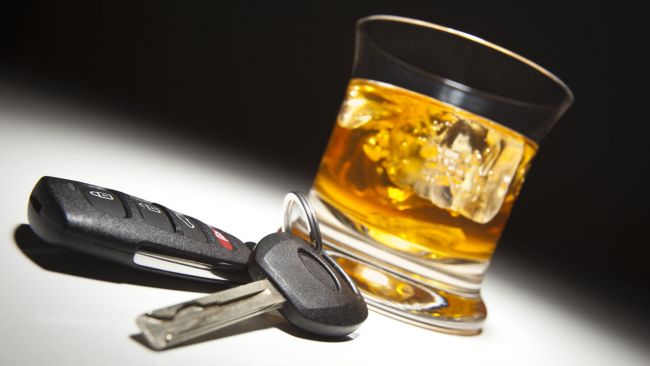
ALCOHOL LEVEL
Like the degree of intoxication, the time after which alcohol is removed from the body depends on the physiological characteristics of a particular person. However, there are also generalizing points, such as gender, age and weight characteristics, the presence or absence of diseases, and the frequency of alcohol consumption. As you can see, everything depends on the individual characteristics of the body; accordingly, drinking the same amount of alcohol can lead to different consequences for different people. In addition to the physiological characteristics of the person himself, the strength of the alcohol consumed is also important. Vodka, champagne, beer lead to varying degrees of alcoholic intoxication and the rate of neutralization of alcohol is different for different drinks. Likewise, the amount of alcohol consumed influences the degree of intoxication. But drinking another drink or food along with alcoholic beverages, on the contrary, has almost no effect on the rate of neutralization of alcohol. Therefore, drivers who believe that by having a good snack while drinking alcohol they will be able to mislead and deceive traffic police officers are making a big mistake. It must be remembered that it is not the alcohol content in the driver’s blood that is recorded, but the alcohol content when exhaled. The level of alcohol content when exhaled also depends on various parameters and varies over time. It is the level of exhaled alcohol that is measured to determine the degree of intoxication of the driver.
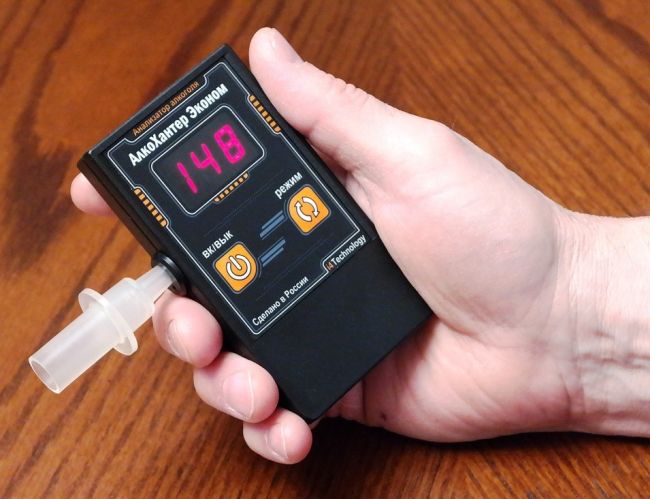
HOW TO DETERMINE YOUR ALCOHOL LEVEL
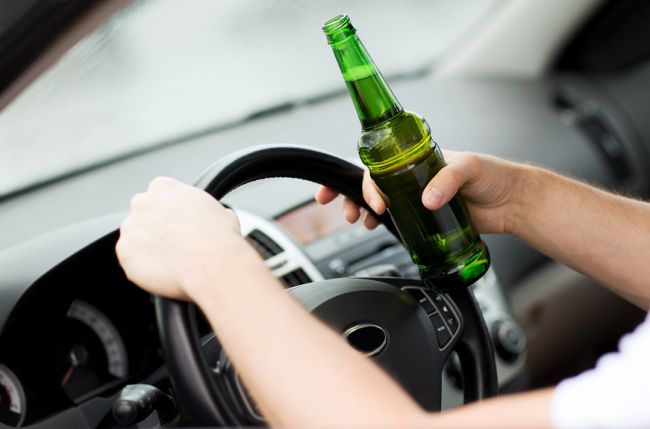
Currently, there are several types of devices for determining alcohol levels (breathalyzers). The presence of a breathalyzer allows the driver to independently determine the level of alcohol. The choice of such devices is quite wide, from expensive to budget options. However, when purchasing this device, you should understand that it has a certain error and you should not trust their readings one hundred percent. This applies to mobile portable devices. The State Traffic Safety Inspectorate is armed with more advanced breathalyzers, which are lasers that allow the detection of alcohol vapor at a considerable distance from the car. However, no precision instruments replace the need to undergo an examination to determine the driver’s condition. And knowledge of the correct order and execution of this procedure is necessary for any driver.
In conclusion, I would like to say that the driver does not need to rely on the readings of his own breathalyzer, but rather make it a rule not to drive after drinking alcohol. Then not only the driver himself, but also those around him can avoid trouble.

